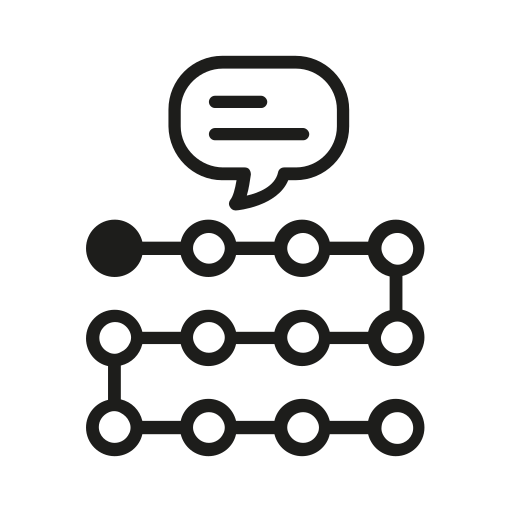Diversity, Equity, and Inclusion (DEI)
The Basic Idea
We often use “diversity,” “equity,” and “inclusion” interchangeably. Most people know that they prescribe equal treatment for everyone. But what do they actually mean?
Let’s start with diversity. “Diversity” broadly refers to the presence of difference in a given setting 1. In most cases, this “difference” points to differences in identity: ethnicity, skin color, sexual orientation, religious group, and so forth; but corporations can also value diversity of thought. Notably, diversity of identities in a workplace can lead to a diversity of thought. However, “diversity” is not a label for people. A Black candidate, for example, shouldn’t be labeled as “diverse”, as that suggests they’re less “normal” or inferior to White people, who aren’t labeled as such. Rather, diversity is about how teams and companies should be composed.
“Equity” refers to the idea that everyone should have access to the same opportunities1. Equity is often confused with equality, but treating everyone equally can maintain inequality. For instance, giving all employees the same equipment might harm the productivity and well-being of an employee with a disability, since they might need specially-designed equipment.
Lastly, “inclusion” refers to the idea that people should feel like they’re welcomed and valued in their organization1. Inclusion does not always coincide with diversity or equity; a diverse group of people could be afforded the same opportunities, but still be made to feel as though they do not belong in their workplace. Instead, inclusion requires an intentional effort to understand and empathize with people’s needs and preferences so they feel valued and included.
Corporations committed to diversity, equity, and inclusion are often the ones where employees thrive.
Diversity is being asked to the party, equity is getting to contribute to the playlist, inclusion is being asked to dance.
– Dr. Robert Sellers, chief diversity officer at the University of Michigan
Theory, meet practice
TDL is an applied research consultancy. In our work, we leverage the insights of diverse fields—from psychology and economics to machine learning and behavioral data science—to sculpt targeted solutions to nuanced problems.
Key Terms
Diversity: the presence of difference in a given setting, commonly a difference in identity or thought.
Equity: an approach that ensures everyone has access to the same opportunities.
Inclusion: the extent to which a corporation’s work culture makes all employees feel welcome, valued, and respected.
History
While the concept of DEI can seem to be a recent emergence, it has a long and rich history. From the 1950s to 1960s, equal employment and affirmative action laws in the United States, particularly the Civil Rights Act of 1964, made hiring and workplace discrimination illegal for any business, private or public 2. These new laws prompted companies in North America to introduce diversity training policies and programs that would help predominantly Caucasian employees adjust to a more multicultural work environment.
One approach that was often adopted by executives was to undergo mandatory training days in which they’d have to sit through workshops and take tests confirming their commitment to remain unbiased 3. These programs were eventually shown to be largely ineffective: employees could digest the information and rules presented to them, but racial bias and discrimination would persist2. Unfortunately, many companies still adopt this traditional approach. A recent iteration of these mandatory training days is known as “Unconscious Bias Training.” This program is often hotly contested in the media due to its known inefficacy and occasional absurdity.
Another common DEI strategy was hiring tests3. Hiring tests allow hiring managers to assess potential employees purely based on technical skills and knowledge, instead of allowing resume profiles—often containing clues of the candidates’ socioeconomic or racial background—to sway their judgment. Unfortunately, this practice wasn’t consistently enforced, because hiring managers preferred to hire people who they “clicked with”. Consequently, hiring discrimination continued.
DEI programs began to receive much-needed adjustment during the tech boom of early 2000. Journalists at CNN Money and the San Jose Mercury News began investigations into the workforce diversity at the Silicon Valley tech giants. These giants’ workplace composition data was so shocking that half the companies under investigation decided to block the report’s public release from the U.S. Department of Labor, claiming that the data fell under the realm of “trade secret” and that releasing it would cause “competitive harm.” This news led to public outrage, pressuring Fortune 500 companies to not only release their DEI statistics but to also pledge a long-term, substantial commitment to DEI.
While the ethical case for DEI was clear, recent research also points to a business case for a more diverse, equitable, and inclusive workplace. For example, a 2015 article by McKinsey & Company found that businesses who rank in the top quartile for racial and ethnic diversity are more likely to have financial returns above industry medians. Research has also demonstrated that companies with a diverse demographic are more innovative and creative, and have a better understanding of diverse target demographics. Companies began to see DEI as a strategic priority 4.
Consequences
There is a stereotype that DEI is meant to pander to cultural trends of tolerance and multiculturalism, but DEI principles are touted even by conservative business leaders for good reason. Morally, we tend to think everyone is entitled to the same respect and opportunities, and practicing DEI ensures that. However, there’s also an economic and business case for practicing DEI.
First, organizations and countries that diversify their candidate pools are stronger and more economically efficient. This is because discrimination presents a form of economic inefficiency: it is a systematic misallocation of a firm’s resourcess.5, 6 After all, replacing otherwise productive workers for arbitrary reasons is costly. In the U.S., for example, the Center For American Progress finds that workplace discrimination against employees based on race, gender, or sexual orientation costs businesses an estimated $64 billion annually. This represents the annual estimated cost of losing and replacing more than 2 million American workers who leave their jobs each year due to unfairness and discrimination. Thus, DEI helps firms save millions, too.
A second business reason for DEI is that it helps firms keep up with current demographic trends. According to the U.S. Census Bureau, the U.S. will become majority non-white by around 2043, and even companies such as Deloitte recognize the accelerating buying power of minority populations 5. Having a more diverse employee and leadership base offers organizations greater insight into the way their consumers from myriad backgrounds think, enabling them to succeed on a global scale. Even in the nonprofit sector, clients want to see themselves represented in the organizations that serve them. Further, having a diversity of perspectives allows nonprofits to arrive at better solutions to social problems.
Finally, DEI enables businesses to be more productive. Scott Page, author of The Difference: How the Power of Diversity Creates Better Groups, Firms, Schools and Societies, uses case studies to show how diversity leads to increased productivity 7. His research finds that a diverse group of problem solvers almost always outperforms the smartest individuals when solving problems. He argues that when different worldviews clash and conjoin, creativity truly blossoms. As well, having a diverse and inclusive organization increases psychological safety, enabling all employees to feel socially safe enough to speak up and share their ideas. This makes intuitive sense: when you feel valued and welcomed, you’re less likely to anticipate threats when voicing an unconventional opinion.
Controversies
One prominent area of contention for DEI is that definitions of “diversity” and “inclusion” can differ. For some, “diversity” specifically refers to the advancement of opportunity and representation for specific underrepresented groups; for others, diversity only refers to promoting intellectual and educational diversity. Of course, these aims can overlap (promoting representation of marginalized groups can help strengthen thought diversity), but they can also conflict 8. Organizations might prioritize ideological diversity while leaving marginalized groups underrepresented. Another issue is that while some take “inclusion” to mean an open discursive climate in which every voice and point of view can be heard, some of these points of view can be deeply offensive—even hurtful—to others. Due to this, some universities prioritize the definition of “inclusion” enabling marginalized groups to feel protected and welcome from assaults to their identity.
In addition to disagreements in how to define DEI, corporations can also engage in merely superficial efforts of DEI, but lack a sincere desire to substantially change their business infrastructure. Many corporations have “diversity statements” in their job postings stating that they’re an “equal opportunity employer,” but then continue to engage in discriminatory hiring practices 9. Some corporations might also implement “unconscious bias training” programs to show their support for minorities, despite the fact that such programs aren’t just ineffective—they can backfire, causing more discrimination First, unconscious bias training can reinforce harmful stereotypes against minorities by giving them exposure. Second, this training can undermine people’s autonomy, making them less motivated to combat their biases: they might think it’s something their corporations are telling them to do, versus something they themselves want to do. According to Fatima Tresh, a social and organizational psychologist who works for the UK diversity consultancy Delta Alpha Psi, quick fixes like diversity statements and unconscious bias training are “tick-box exercises”10. This refers to the common idea of putting employees through mandatory training, largely for the sake of reporting that employees have undergone appropriate training.
Measuring DEI in the workplace:
One question you might be wondering is: how do businesses measure their progress when it comes to their DEI achievements? Some metrics might include retention numbers, differences in pay, representation by level (e.g., how many women are present in C-suite positions versus associate positions), and promotion numbers for minority races and genders 11. Besides these demographic differences that are readily quantifiable, however, how might businesses measure more qualitative aspects, e.g., how respected, valued, and welcomed employees feel?
Recently, Gartner, a research and advisory firm, proposed a measure known as the Gartner Inclusion Index, which captures “inclusion” through 7 dimensions:
- Fair treatment: Employees at my organization who help the organization achieve its strategic objectives are rewarded and recognized fairly.
- Integrating differences: Employees at my organization respect and value each other’s opinions.
- Decision making: Members of my team fairly consider ideas and suggestions offered by other team members.
- Psychological safety: I feel welcome to express my true feelings at work.
- Trust: The communication we receive from the organization is honest and open.
- Belonging: People in my organization care about me.
- Diversity: Managers at my organization are as diverse as the broader workforce.
Employees are asked to rate their agreement with 45 statements related to these 7 elements, and a greater degree of approval signals a more inclusive organization. These DEI measurement tools not only keep organizations accountable, but organizations that adjust based on measurement feedback report being more inclusive than their counterparts that rely primarily on informal judgement11.
Related TDL Content
How Diversity Statements Backfire—and What Organizations Can Do About It
In this article, Jeffrey To makes a case for why diversity statements, a common feature of contemporary hiring, can cause more harm than good for minority applicants. I provide recommendations for companies to adjust their diversity statements to become more helpful.
Speaking the Truth: Accents, Credibility, and Implicit Bias
In this emotionally candid article, staff writer Shi Shi Li explains how foreign accents can impair how others perceive one’s credibility. One reason given is that a foreign accent can provoke others’ implicit biases, underscoring the pivotal role of DEI programs to mitigate accent discrimination.
Sources
- Saska, S. (2017). Diversity v.s. equity v.s. inclusion | Culture Amp. Retrieved 13 August 2021, from https://www.cultureamp.com/blog/diversity-equity-inclusion-work
- Dong, S. (2021). The History and Growth of the Diversity, Equity, and Inclusion Profession. Retrieved 13 August 2021, from https://insights.grcglobalgroup.com/the-history-and-growth-of-the-diversity-equity-and-inclusion-profession/
- A Brief History of Diversity in the Workplace [Infographic]. (2016). Retrieved 13 August 2021, from https://www.brazen.com/resources/a-brief-history-of-diversity-in-the-workplace-infographic
- 5 Benefits of Diversity in the Workplace. (2021). Retrieved 27 July 2021, from https://abilityoptions.org.au/about-us/news-events/blog/5-benefits-of-diversity-in-the-workplace
- Kapila, M. (2016). Why Diversity, Equity, and Inclusion Matter — Independent Sector. Retrieved 13 August 2021, from https://independentsector.org/resource/why-diversity-equity-and-inclusion-matter
- Futrelle, D. (2013). Discrimination Doesn’t Make Dollars, or Sense. Retrieved 12 August 2021, from https://business.time.com/2013/02/19/discrimination-doesnt-make-dollars-or-sense/
- Page, S. (2008). The Difference : How the Power of Diversity Creates Better Groups, Firms, Schools, and Societies. Princeton University Press.
- Burbules, N. (2021). The conflicts between people’s interpretations of diversity, equity and inclusion (opinion) | Inside Higher Ed. Retrieved 13 August 2021, from https://www.insidehighered.com/views/2021/04/15/conflicts-between-peoples-interpretations-diversity-equity-and-inclusion-opinion
- Kang, S., DeCelles, K., Tilcsik, A., & Jun, S. (2016). Whitened Résumés. Administrative Science Quarterly, 61(3), 469-502. doi: 10.1177/0001839216639577
- The complicated battle over unconscious-bias training. (2021). Retrieved 13 August 2021, from https://www.bbc.com/worklife/article/20210326-the-complicated-battle-over-unconscious-bias-training
- Romansky, L. (2021). How to Measure Inclusion in the Workplace. Retrieved 13 August 2021, from https://hbr.org/2021/05/how-to-measure-inclusion-in-the-workplace


